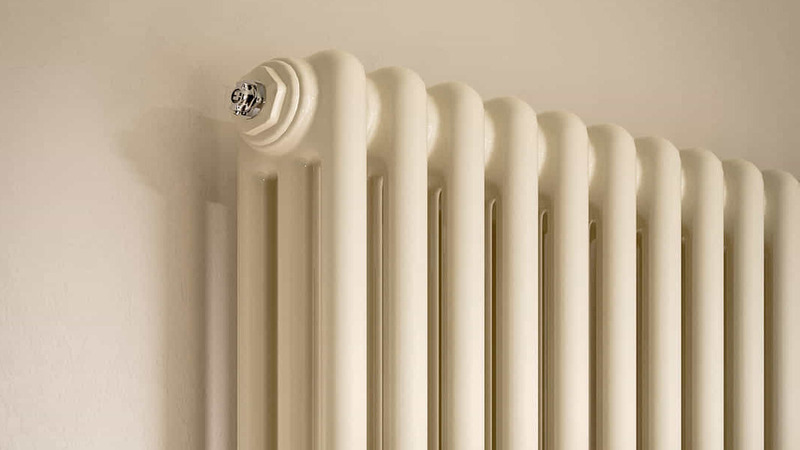Whoever is considering installing new radiators at home must take into account several important factors, ranging from the material they are made of to the size of the spaces to be heated. Let’s explore the criteria to keep in mind and how to choose the best solution for your needs.
Which radiators stay hot for longer?
The most modern radiators include products made of aluminum and steel, although cast iron radiators are still found in some homes. These were once the dominant type of radiator on the market but have now fallen out of favour thanks to research and innovations that have enabled the production of aluminum and steel radiators.
These modern radiators offer positive impacts in terms of energy savings, costs, and maintenance. Let’s take a closer look at their respective advantages and disadvantages.
- Cast iron radiators. These are the classic radiators that have characterized heating systems for decades. They are heavy, more complex to install, and expensive, but they provide high thermal inertia: they retain heat for a long time even after the heating system is turned off.
- Aluminum radiators. These heat up quickly but retain heat for a shorter period. They are particularly suitable for small spaces and are generally less expensive compared to other types.
- Steel radiators. Similar to cast iron radiators, they offer excellent thermal inertia, retaining heat for a long time even after the heating system is turned off. However, they take longer to heat up compared to aluminum radiators.
Cast iron radiators now belong to an older generation, occupying only a small share of the market, mainly due to their aesthetic appeal.
As for steel and aluminum radiators, both are available with stylish finishes. The main difference lies in their thermal inertia:
- steel radiators take longer to heat up but cool down more slowly;
- aluminum radiators heat up and release heat quickly but cool down just as fast.
How to improve radiator performance?
In addition to the material, as previously mentioned, it is essential to consider the spaces where the heating is distributed through the radiators. For medium to large-sized living spaces, for example, steel radiators are preferable due to their high thermal inertia.
The first step, however, remains to arrange for an inspection by a specialized technician who, thanks to their expertise and experience, can recommend suitable models based on thermal efficiency.
Thermal efficiency refers to a parameter that indicates the amount of heat a radiator emits over a specific time period, expressed in Watts (W). It essentially represents the radiator's capacity to heat the environment and depends on several factors such as:
- construction materials;
- shape and design;
- environmental conditions.
While the material has already been discussed, regarding the radiator's shape and design, it’s useful to know that the larger the surface area, the greater its capacity to emit heat. As for environmental conditions, thermal efficiency is influenced by the room's insulation and the radiator's placement.
In this regard, basic rules suggest that radiators should not be installed behind sofas or bulky furniture, as these would obstruct heat distribution. Additionally, they should not be covered with curtains, as this would interrupt the flow of warm air.

How to make radiators heat more?
In addition to good practices, smart home devices offer precise and efficient heat management. Tools such as smart valves enhance radiator performance, ensuring they operate correctly without wasting energy, which could lead to higher bills, while maintaining a cosy environment.
Smart valves, connected via Wi-Fi, are easy to install as replacements for manual ones and come equipped with various functionalities thanks to advanced technology.
- Multizone functionality: this allows heating only specific areas that need it at a given time, optimizing energy consumption.
- Intelligent sensors: they detect open windows in your home and deactivate heating in the affected room or zone, preventing heat loss.
- Geofencing system: it detects the presence of a user in the area where the radiator is installed and activates heating accordingly.
- Vacation mode: it monitors the heating system’s performance while you’re away and notifies you promptly in case of issues, avoiding unpleasant surprises upon your return.
Lastly, maintenance and cleaning of radiators, always performed by a qualified technician, are crucial. This not only ensures proper heating performance but also helps maintain the product’s durability and high performance over time.

Why the radiator does not heat
Radiators that struggle to heat the home might suffer from various issues.
- Accumulated dirt and deposits: they block water circulation inside the radiators, reducing efficiency.
- Air bubbles: if present in the radiators, air pockets can obstruct water flow. To fix this, simply bleed the radiators. If they resume heating adequately after this simple step, the issue is resolved.
- Low water pressure: insufficient water pressure prevents adequate flow to all radiators.
- Thermostat set too low: a low temperature setting on the thermostat can limit heat output.
- Partially closed thermostatic valves: valves that are not fully open restrict water flow, reducing efficiency.
By addressing these factors and combining them with smart home tools, you can optimize the performance of your radiators and enjoy a warmer, more energy-efficient home.









































